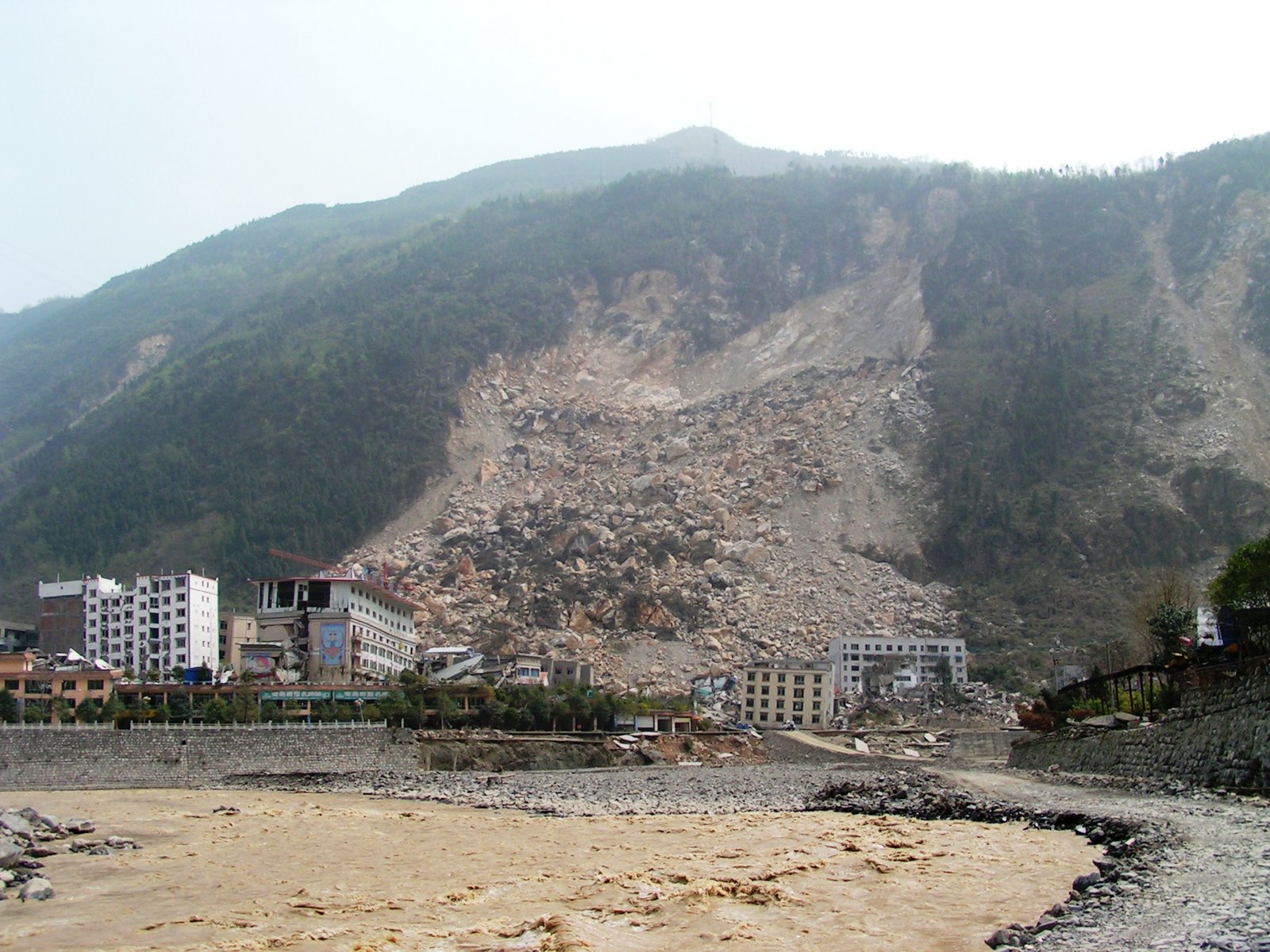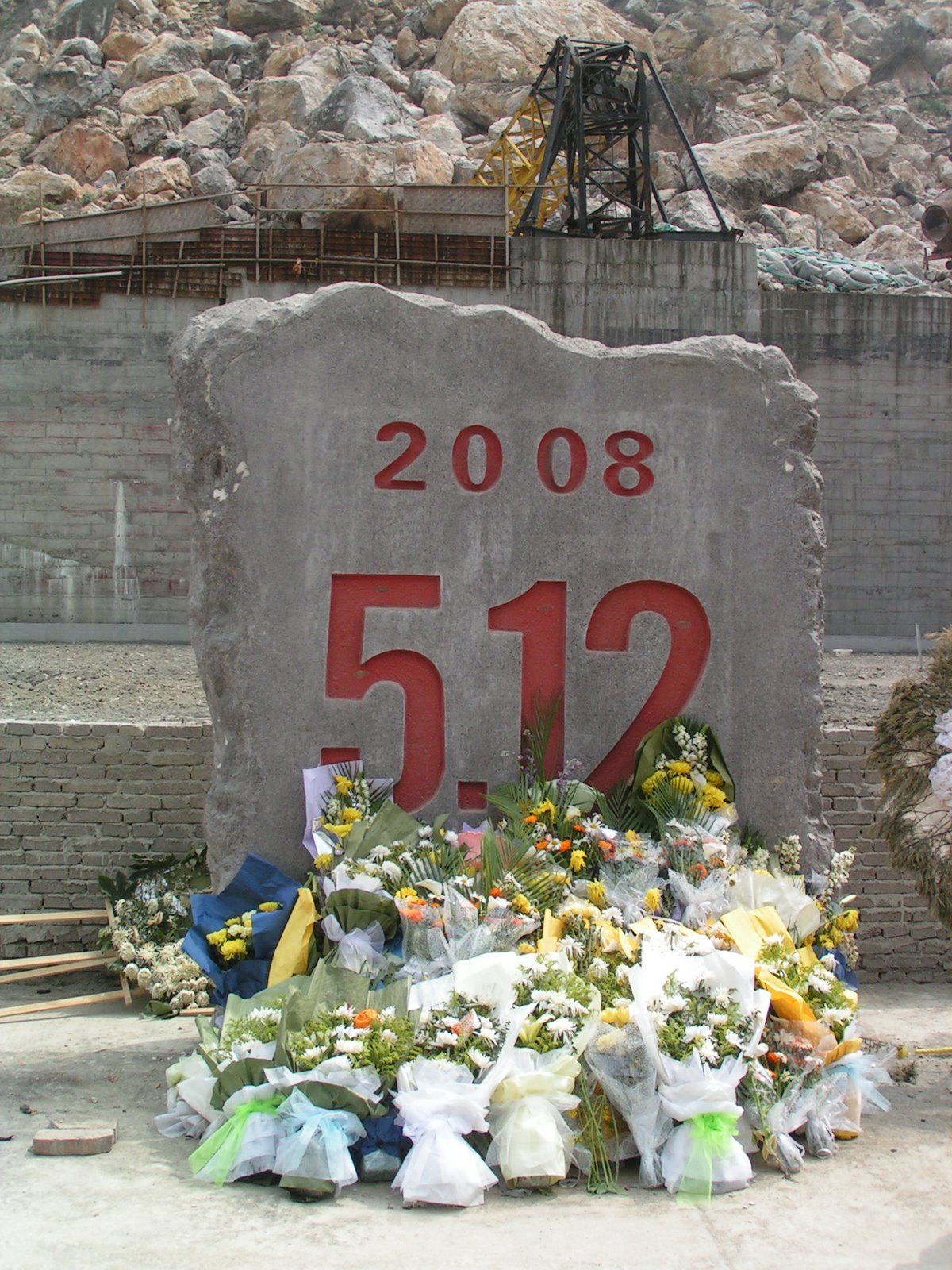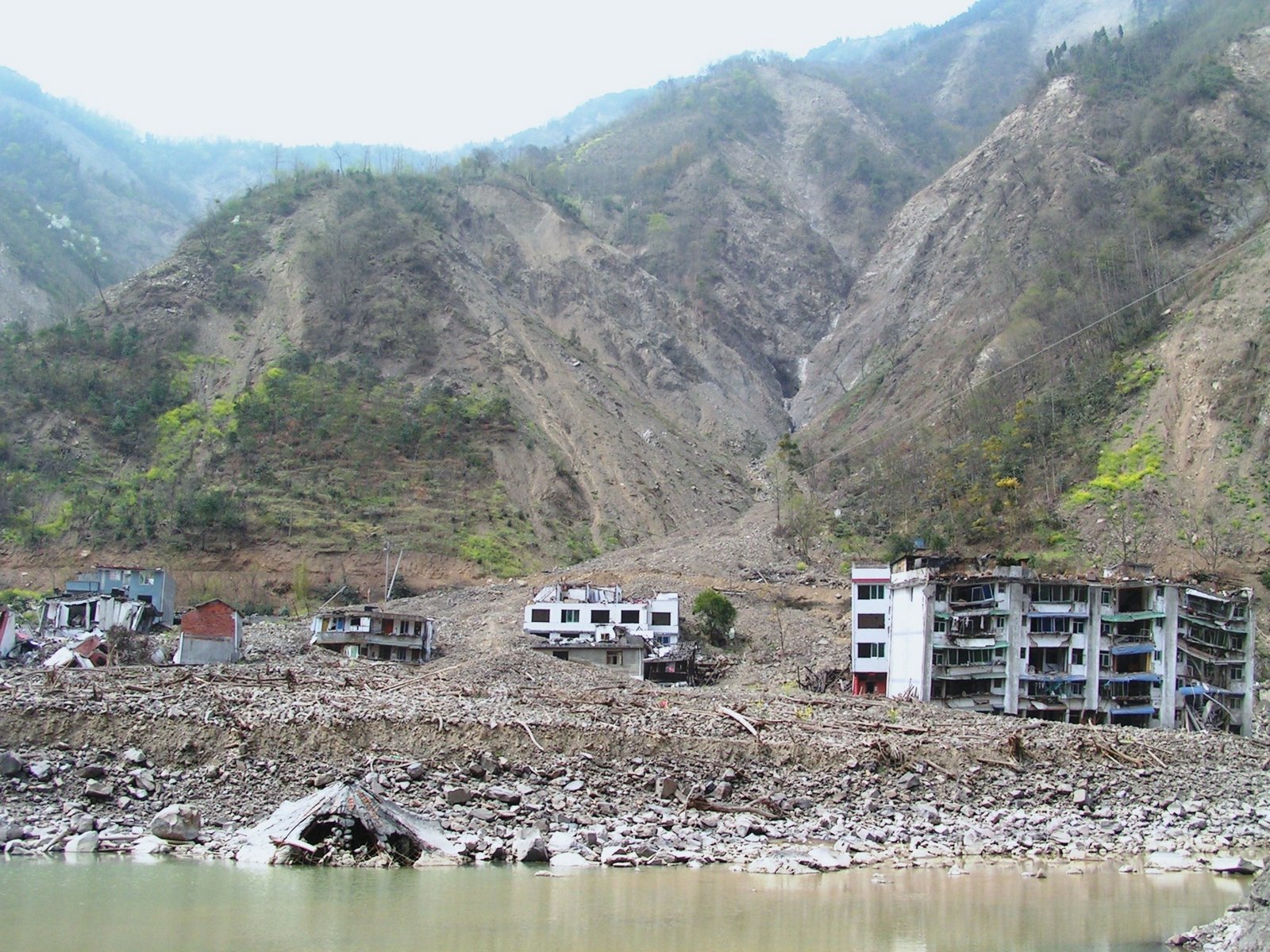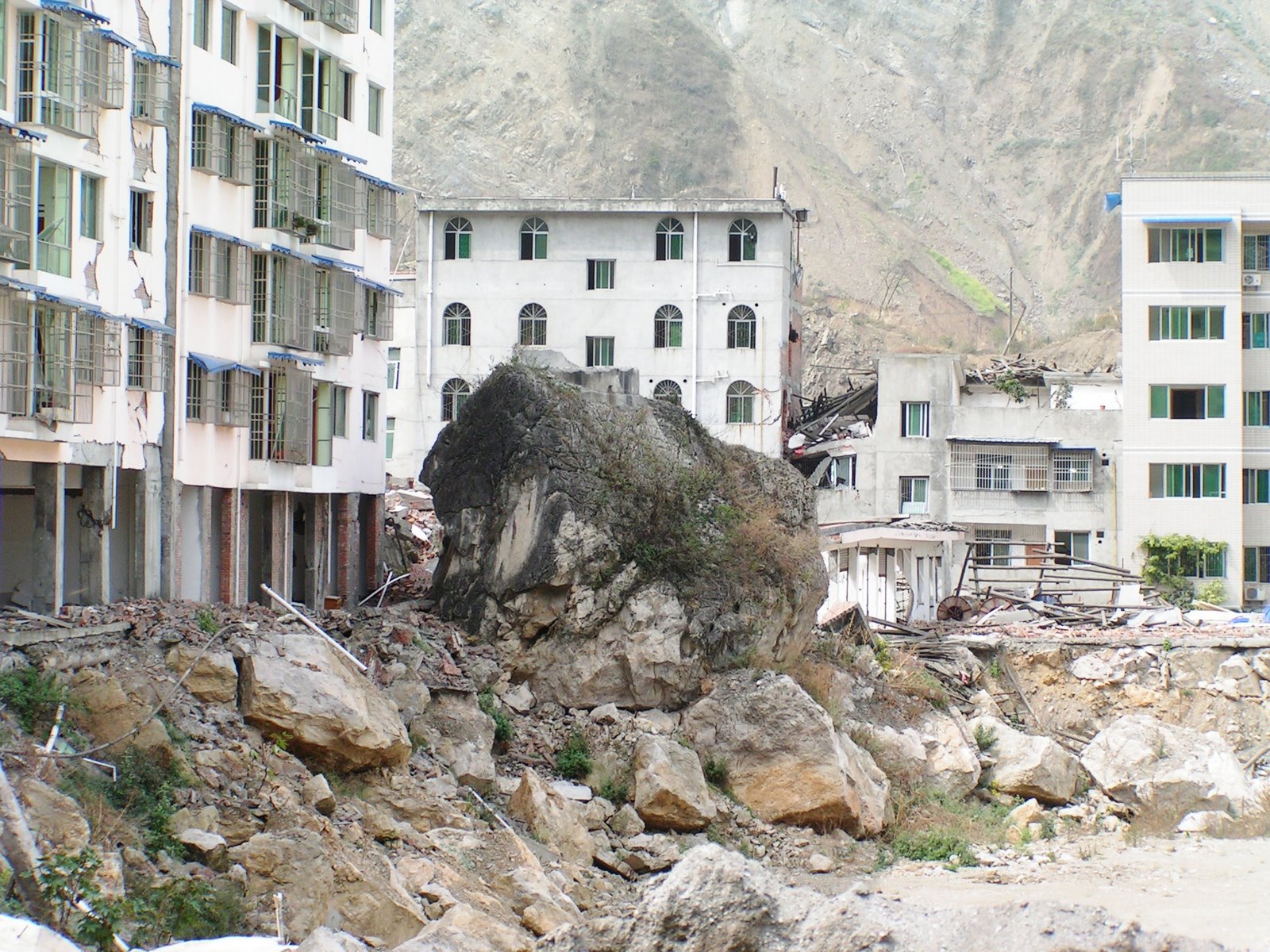25 March 2009
Beichuan – photos of the aftermath of a natural catastrophe
Posted by Dave Petley
 This is the first of my series of photographic reviews of the earthquake affected area in Sichuan Province. The other sets are as follows:
This is the first of my series of photographic reviews of the earthquake affected area in Sichuan Province. The other sets are as follows:
Part 1 (this part): Beichuan town
Part 2: The Tangjiashan landslide
Part 3: Hanwang town
Part 4: The Mianyuanhe area
Part 5: The Xingyiu area
Thanks to my friends in the State Key Laboratory for Geohazards at the Chengdu University of Technology I have spent the last few days in Sichuan Province visiting some of the key sites destroyed in the 12th May 2008 earthquake with the aim of developing some collaborative research projects. I have been fortunate to be able to visit places such as Beichuan and Tangjiashan. Over the next few days I will try to post a photographic summary of various locations.
An appropriate though tragic starting point is inevitably Beichuan, the town that was so devastated by both the earthquake shaking and by the effects of landslides. I am one of the few outsiders to be able to visit the town. It was a very emotional experience – I hope that below I can portray the state of the place, which has now been permanently abandoned with the intention of transforming it into a permanent memorial to the earthquake and its victims. The toppled lions below seem to symbolise the fall of the town:

The Google Earth image below shows the location of Beichuan within China. Its location in terms of lat and long is 31°50’2.0″N 104°27’30.5″E. Click on the image for a better view – this is the case with all the images in this post.
 I managed to find two pictures of Beichuan before the earthquake. I guess that the place was not architecturally much to write home about, but the location is / was very beautiful, such that the town had many tourist hotels within it. Before the earthquake the town had about 20,000 residents.
I managed to find two pictures of Beichuan before the earthquake. I guess that the place was not architecturally much to write home about, but the location is / was very beautiful, such that the town had many tourist hotels within it. Before the earthquake the town had about 20,000 residents.

 Beichuan’s misfortune was to be relocated right on the fault that ruptured to cause the earthquake. The fault runs through the middle of the newer part of the town – I have annotated the approximate surface trace of the fault on this image below, whilst the following photograph shows the surface expression of it:
Beichuan’s misfortune was to be relocated right on the fault that ruptured to cause the earthquake. The fault runs through the middle of the newer part of the town – I have annotated the approximate surface trace of the fault on this image below, whilst the following photograph shows the surface expression of it:

 The intensity of the earthquake shaking at Beichuan was clearly very high. A good indication of this is the rear jib of a tower crane that was standing in the town – the intensity of the shaking has caused the jib to bend as a result of the forces acting on the rear counterweight, despite the bracing.
The intensity of the earthquake shaking at Beichuan was clearly very high. A good indication of this is the rear jib of a tower crane that was standing in the town – the intensity of the shaking has caused the jib to bend as a result of the forces acting on the rear counterweight, despite the bracing.
 Fortunately the crane did not collapse, unlike an adjacent one:
Fortunately the crane did not collapse, unlike an adjacent one:
 The impact of the shaking was first to cause many buildings to crumple. A substantial number underwent so-called “soft storey” collapse, where the bottom few floors pancake whilst the upper floors remain intact (the smaller rooms on upper floors mean that the building is often stronger at higher levels, whilst the larger open spaces on the lower floors (for reception areas, shops, restaurants, etc) mean that the building is weak at this level). Of course soft storey failures are particularly serious when the earthquake strikes during the day as the lower floors tend to be more densely occupied then. The following building underwent a soft storey failure – note how the lower floors ha
The impact of the shaking was first to cause many buildings to crumple. A substantial number underwent so-called “soft storey” collapse, where the bottom few floors pancake whilst the upper floors remain intact (the smaller rooms on upper floors mean that the building is often stronger at higher levels, whilst the larger open spaces on the lower floors (for reception areas, shops, restaurants, etc) mean that the building is weak at this level). Of course soft storey failures are particularly serious when the earthquake strikes during the day as the lower floors tend to be more densely occupied then. The following building underwent a soft storey failure – note how the lower floors ha
ve almost completely vanished:
 Many other buildings partially or completely collapsed, many creating essentially impenetrable piles of debris that killed, injured and trapped thousands of people:
Many other buildings partially or completely collapsed, many creating essentially impenetrable piles of debris that killed, injured and trapped thousands of people:


 One of the great fears in the aftermath of earthquakes is what the insurance industry call “fire following”, when the damaged buildings ignite and burn as a result of ruptured gas mains, burst gas cylinders, overturned candles and fires, and suchlike. Fire following does not seem to have been a big problem in Beichuan, although one or two of the buildings do show some fire damage:
One of the great fears in the aftermath of earthquakes is what the insurance industry call “fire following”, when the damaged buildings ignite and burn as a result of ruptured gas mains, burst gas cylinders, overturned candles and fires, and suchlike. Fire following does not seem to have been a big problem in Beichuan, although one or two of the buildings do show some fire damage:
 Unfortunately, worse was to come for the people of Beichuan. In the new part of the town the Middle School was located at the toe of a large rock slope almost directly on the fault trace. The earthquake immediately triggered a massive landslide on the slope that crashed down directly onto the school and adjacent buildings.
Unfortunately, worse was to come for the people of Beichuan. In the new part of the town the Middle School was located at the toe of a large rock slope almost directly on the fault trace. The earthquake immediately triggered a massive landslide on the slope that crashed down directly onto the school and adjacent buildings.

The landslide was particularly damaging as the slope collapse took the form of massive boulders (each several metres across) that bulldozed everything in their path. The image below shows the location of the school – all that was left was the flag pole and a solitary basketball hoop. About 600 people died in this landslide, including almost all of the children in the school:
 According to local people, about ten minutes after the main landslide a second massive slope failure occurred, this time above the old town on the other side of the river. Of course the landslide slid into and over buildings that were mostly already greatly weakened or even collapsed from the earthquake itself.
According to local people, about ten minutes after the main landslide a second massive slope failure occurred, this time above the old town on the other side of the river. Of course the landslide slid into and over buildings that were mostly already greatly weakened or even collapsed from the earthquake itself.

This landslide appears to have been extremely rapid, pushing an air blast ahead of it that destroyed almost all of the remaining buildings in the old part of the town. The devastation is almost total:
 1,600 people died beneath this second landslide, bringing the death toll in the town as a whole to an estimated 12,000 people. The victims are remembered in a simple but very emotive memorial that is located in the centre of the town:
1,600 people died beneath this second landslide, bringing the death toll in the town as a whole to an estimated 12,000 people. The victims are remembered in a simple but very emotive memorial that is located in the centre of the town:
 Unfortunately, for the people of Beichuan and for their rescuers the troubles were not over as upstream of the town the river valley was blocked by the massive Tangjiashan landslide. Those people who read the blog back in May and June will remember my multiple posts on this issue as we followed the ultimately successful attempts to drain the lake. I will post here about my visit to Tangjiashan in the next day or so, but for now this is a photograph of the channel upstream from Beichuan through which the flood wave from Tangjiashan travelled. The multiple landslides that are shown here were primarily triggered by the flood waters undercutting the slope toe:
Unfortunately, for the people of Beichuan and for their rescuers the troubles were not over as upstream of the town the river valley was blocked by the massive Tangjiashan landslide. Those people who read the blog back in May and June will remember my multiple posts on this issue as we followed the ultimately successful attempts to drain the lake. I will post here about my visit to Tangjiashan in the next day or so, but for now this is a photograph of the channel upstream from Beichuan through which the flood wave from Tangjiashan travelled. The multiple landslides that are shown here were primarily triggered by the flood waters undercutting the slope toe:
 One of the great problems in earthquake-affected mountainous areas is that the huge amounts of sediment released by landslides make the area very susceptible to debris flows. The final ignominy for Beichuan was that in September the area suffered from exceptionally heavy rainfall that triggered extensive debris flows. Many of the remaining buildings were buried up to and sometimes beyond the second storey. Parts of the old town were covered in 10 metres of sediment:
One of the great problems in earthquake-affected mountainous areas is that the huge amounts of sediment released by landslides make the area very susceptible to debris flows. The final ignominy for Beichuan was that in September the area suffered from exceptionally heavy rainfall that triggered extensive debris flows. Many of the remaining buildings were buried up to and sometimes beyond the second storey. Parts of the old town were covered in 10 metres of sediment:

This is of course why the decision of the government to relocate the town of Beichuan is quite right. I just hope that after all that they have been through the people of Beichuan can find some stability.
A final footnote – I suspect that this may not be the first major slope failure at Beichuan – this huge boulder apparently predates the earthquake (there are mature bushes growing on it). It is located about 100 m from the toe of the slope – I wonder how it got there?
 Other parts of this series are:
Other parts of this series are:
This is the first of my series of photographic reviews of the earthquake affected area in Sichuan Province. The other sets are as follows:
Part 1 (this part): Beichuan town
Part 2: The Tangjiashan landslide
Part 3: Hanwang town
Part 4: The Mianyuanhe area
Part 5: The Xingyiu area
Your comments and corrections are as every very welcome.


 Dave Petley is the Vice-Chancellor of the University of Hull in the United Kingdom. His blog provides commentary and analysis of landslide events occurring worldwide, including the landslides themselves, latest research, and conferences and meetings.
Dave Petley is the Vice-Chancellor of the University of Hull in the United Kingdom. His blog provides commentary and analysis of landslide events occurring worldwide, including the landslides themselves, latest research, and conferences and meetings.
Those pictures are amazing…
Hello all,While I surf blog , i found a all new trick in http://pic-memory.blogspot.com/Vistor can comment and EMBED VIDEO YOUTUBE , IMAGE. Showed Immediately!EX : View Source.http://pic-memory.blogspot.com/2009/02/photos-women-latin-asian-pictu…(add photos and videos to Blogspot comments).Written it very smart!I wonder how they do it ? Anyone know about this , please tell me 😀 (sr for my bad english ^_^)email: [email protected].
THANK YOU for your amazing blogs. I would like to know the possibilities of any further aftershocks in beichuan area, given its extensive damage last year. i've heard rumors that there will be a major aftershock even after a year.
I visited with my school earlier this year. It's really odd to look at your (amazing, harrowing) pictures and think 'I was right there' – I recognise alot of it. We were really lucky to be allowed onto the site, and although it upset alot of us to see, it was ultimately a positive lesson in the resilience of humanity. The survivors and rescuers were and are amazing. It's going to be made into a kind of museum from what I've heard.
[…] in China, where I will stay until Saturday. Whilst this provides an opportunity to return to Beichuan, which will be very interesting in the context of the rainfall-induced landslides this summer, it […]
[…] substantial issues, and it is surprising that there have not been more fatalities. For example, the earthquake-devastated town of Beichuan was reportedly flooded once again. Xinhua has a set of images of landslide damage elsewhere […]
[…] substantial issues, and it is surprising that there have not been more fatalities. For example, the earthquake-devastated town of Beichuan was reportedly flooded once again. Xinhua has a set of images of landslide damage elsewhere […]